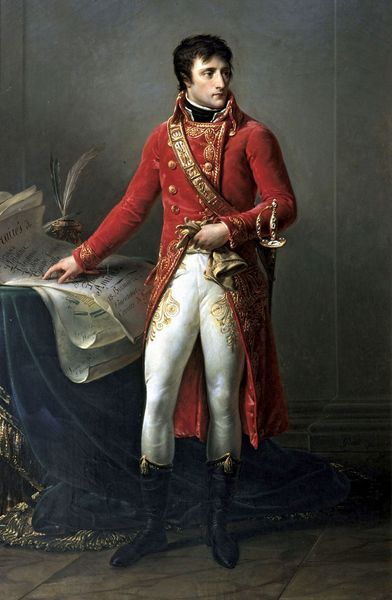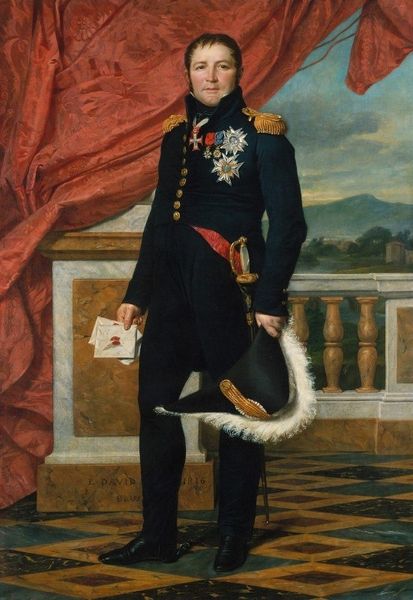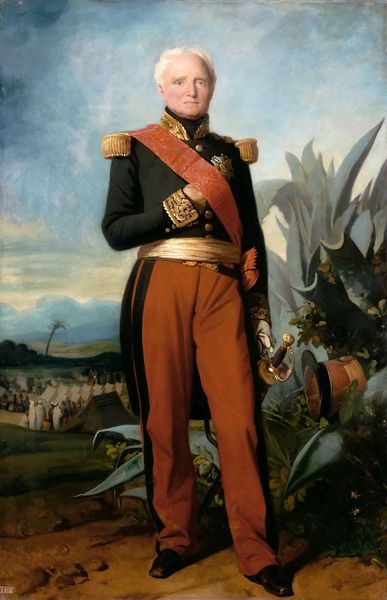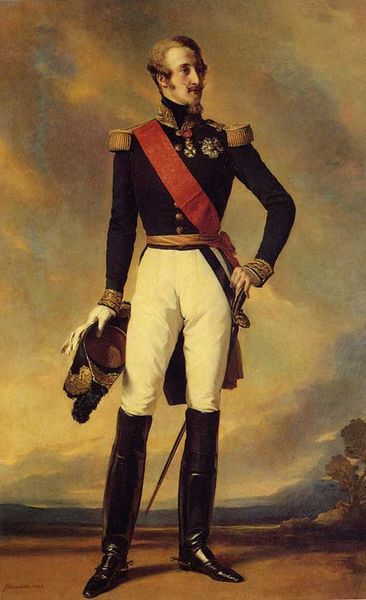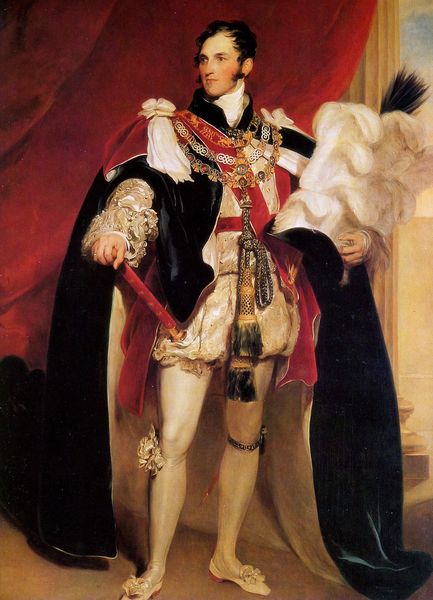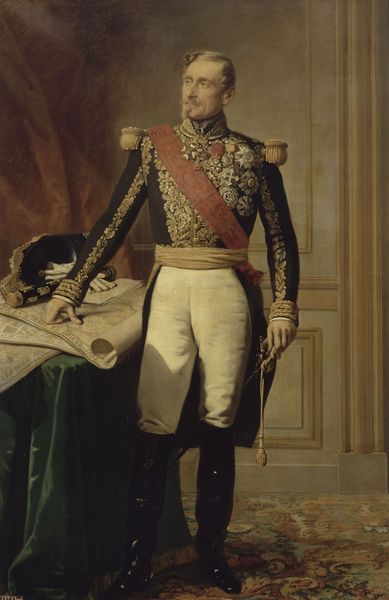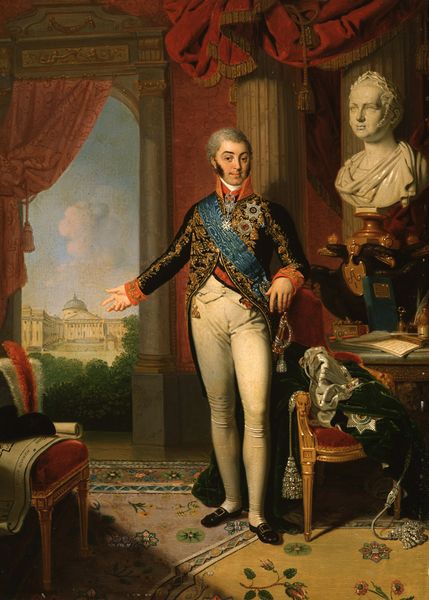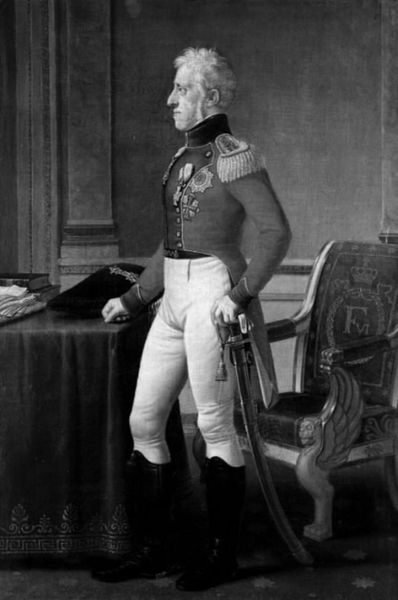
painting, oil-paint
#
portrait
#
figurative
#
neoclacissism
#
character portrait
#
painting
#
oil-paint
#
figuration
#
history-painting
#
academic-art
Copyright: Public Domain: Artvee
Jacques Louis David painted Napoleon in 1812, using oil on canvas. Here, the Emperor stands in his study at the Tuileries Palace, a space meant to convey power and authority. However, David complicates the expected image of imperial majesty. The setting, though grand, is also domestic. The papers, the books, the clock showing 4:13 AM – these details suggest the life of a man consumed by work. France at this time was in the grip of the Napoleonic Wars, a period of immense social and political upheaval. The Revolution had challenged the old hierarchies, but Napoleon’s rise reintroduced a new form of centralized power. David, as an artist closely associated with both the Revolution and Napoleon, walks a fine line. Is this a portrait of a dedicated leader, or a commentary on the burdens of power? To truly understand this, we can examine not only the painting itself but also the social conditions that shaped its creation, using letters, archives, and other historical resources. Art, after all, doesn't exist in a vacuum; it reflects and refracts the world around it.
Comments
No comments
Be the first to comment and join the conversation on the ultimate creative platform.


